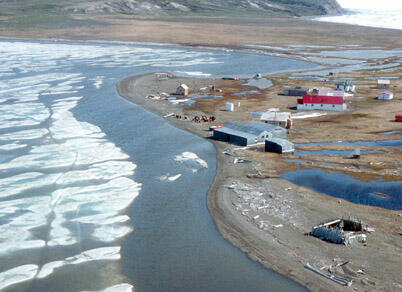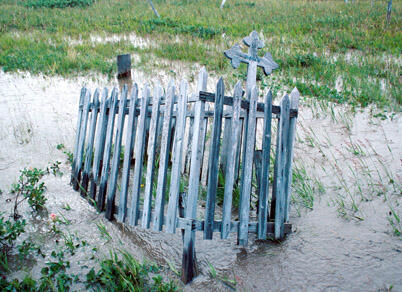Herschel Island
2008 World Monuments Watch
At the edge of the Beaufort Sea off the north coast of Canada's Yukon Territory, Herschel Island was first inhabited a millennium ago by the Thule—ancestors of the present-day Inuit. Following the discovery that the Beaufort Sea was home to a large population of Bowhead whales—prized for their oil—in the late nineteenth century, the first European/American settlement was founded on the island, which quickly became a hub for commercial whaling in the region.
Herschel Island is home to numerous archaeological sites associated with the Thule and Inuit, as well as the earliest European/American settlements. Many whaling-related historic structures are preserved on the island, including buildings constructed by the Northern Whaling & Trading and Pacific Whaling Companies (1890-1930s), an Anglican Mission House dedicated to St. Patrick (ca. 1906), and military headquarters erected by the Royal Canadian Corps of Signals (1924).
The island was designated a National Historic Site of Canada in 1972. The cultural resources of Herschel Island are threatened by rising sea levels, eroding coastlines, and melting permafrost caused by global warming. In recent years, the western Canadian Arctic region and Alaska have experienced the greatest rise in annual temperatures of any region in the world. As a result, sea levels in the region have risen 10 to 20 centimeters in the past century.
Warmer temperatures have led to the disappearance of sea ice, and increasingly violent late summer and fall storms batter the island. In recent years, some of the historic buildings on the island have been moved from their original locations to prevent them from being overtaken by the sea, but it is clear that in the coming years, much of the cultural heritage of Herschel Island will be lost as temperatures continue to rise. Sea level is conservatively estimated to rise another half meter in the next century.
A change of that magnitude will cause water to reach most of the historic whaling structures, which are located close to the shoreline, and to damage or destroy many archaeological sites and burials, which are already being damaged by melting permafrost. Its caretakers are working to record what remains there, so that the history of this unique place will not disappear completely.


